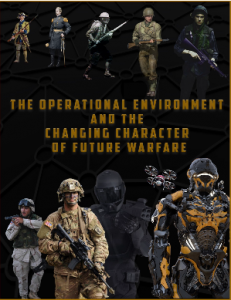 [Editor’s Note: The following post addresses the Era of Contested Equality (2035-2050) and is extracted from the U.S. Army Training and Doctrine Command (TRADOC) G-2’s The Operational Environment and the Changing Character of Future Warfare, published last summer. … Read the rest
[Editor’s Note: The following post addresses the Era of Contested Equality (2035-2050) and is extracted from the U.S. Army Training and Doctrine Command (TRADOC) G-2’s The Operational Environment and the Changing Character of Future Warfare, published last summer. … Read the rest
51. Black Swans and Pink Flamingos
The Mad Scientist Initiative recently facilitated a workshop with thought leaders from across the Department of Defense, the Intelligence Community, other Government agencies, industry, and academia to address the unknown, unknowns (i.e., Black Swans) and the known, knowns (i.e., Pink … Read the rest
47. Quanta of Competition
(Editor’s Note: Mad Scientist Laboratory is pleased to present the following post by repeat guest blogger Mr. Victor R. Morris. Strap in and prepare yourselves for a mind-expanding discussion on the competition field’s application of quantum field theory … Read the rest
44. Megacities: Future Challenges and Responses
“Cities now sprawl over large areas of the globe and contain almost two-thirds of the world’s population. These numbers will only increase. Some megacities will become more important politically and economically than the nation-state in which they reside…. Furthermore, the … Read the rest
43. The Changing Character of Warfare: Takeaways for the Future
The Future Operational Environment (OE), as described in The Operational Environment and the Changing Character of Future Warfare , brings with it an inexorable series of movements which lead us to consider the following critical question:
What do these … Read the rest




